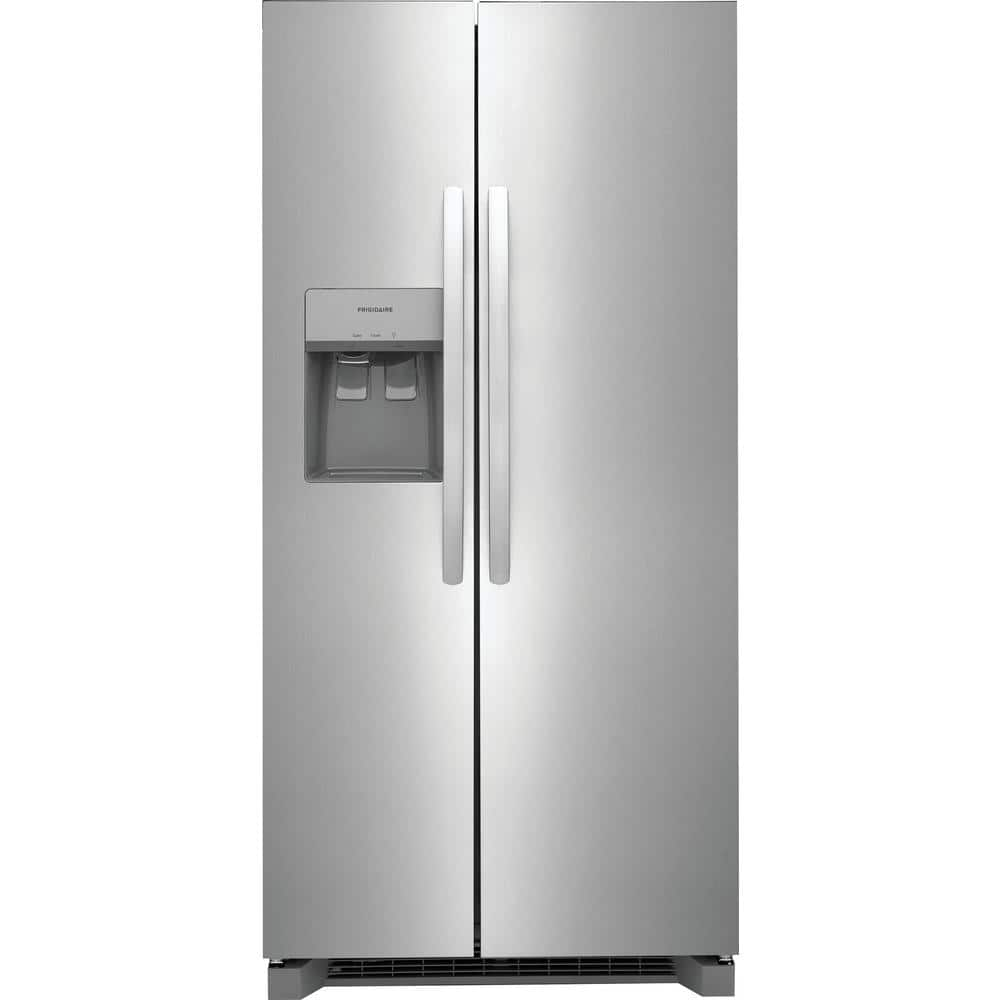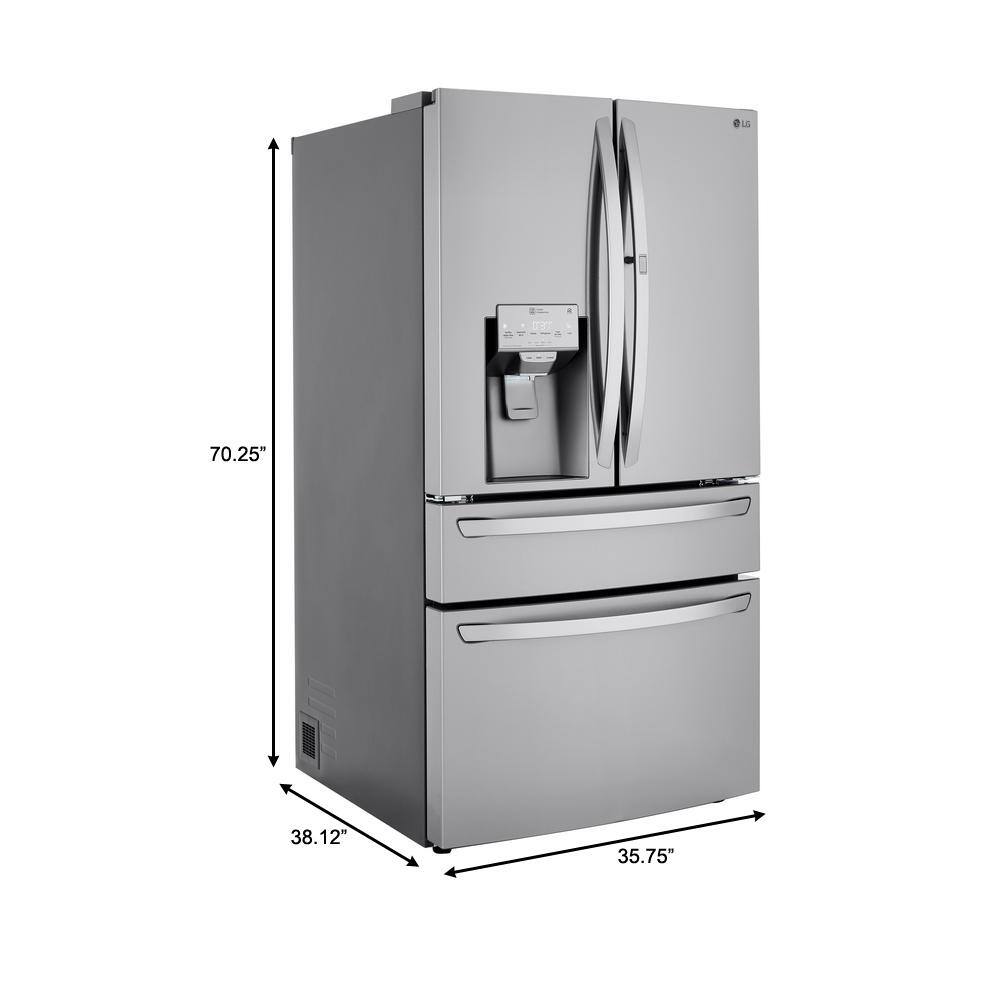Frigidaire 33 in. 22.3 cu. ft. Standard Depth Side by Side Refrigerator in Stainless Steel
Keep food fresh & reduce freezer burn top to bottom with EvenTemp. Keep produce fresh for longer in our crispers. Find fresh foods quickly with our bright LED lighting.
This Frigidaire 33″ Side-by-side refrigerator offers our EvenTemp™ Cooling System which reacts quickly to temperature fluctuations and constantly circulates cold air throughout the fresh food and freezer compartments, ensuring a consistent cool from top to bottom.
- Keep your food fresh and reduce freezer burn with our EvenTemp™ Cooling System that reacts quickly to temperature fluctuations and constantly circulates cold air throughout the fresh food and freezer compartments.
- Keep fruits and vegetables fresh in our crispers that offer a seal to block out dry air.
- Find fresh foods quickly with our bright LED lighting.
- Keep safe, great tasting water flowing. Our filter reduces up to 99% of contaminants, cuts back on plastic and saves the cost of bottled water. NSF & WQA certified.
- 2-Crisper Drawers keep your fruits and vegetables fresh
- Door Storage includes a covered Dairy Compartment 2 gal., Door bins and 2 l Adjustable Door Bins that offer storage for larger items
- Large 14.17 cu. ft. fresh food capacity has the space to keep foods organized and 7.90 cu. ft. freezer capacity gives you room for storing all your frozen foods
- 1-Full Freezer basket, 3-wire shelves and 4-White Bins in the door provide organized storage for frozen foods
- Color-coordinated handles for a stylish appearance
- 2-door refrigerator model that has the freezer on the left and the refrigerator on the right
- Adjustable storage: Over 100 ways to organize and customize your refrigerator
Additional information
| Depth (Excluding Handles) | 32.5 in |
|---|---|
| Depth (Including Handles) | 35 |
| Depth (Less Door) | 28.75 |
| Depth With Door Open 90 Degrees (In) | 48 |
| Height to Top of Door Hinge (in.) | 69.875 |
| Height to Top of Refrigerator (in.) | 68.625 |
| Product Depth x Height x Width (in.) | 35 x 68.625 x 33.125 |
| Refrigerator Width (In.) | 33.125 |
| Certifications and Listings | UL Listed |
| Manufacturer Warranty | One Year Limited |






by Copper
I replaced my Lg with a Frigidaire fridge and I am ecstatic with the features and size!
by Susan
I bought this three weeks ago and I’m glad I did. The size is great for me. The controls are on the inside of the door and that is pretty cool. overall it’s functional good. Only had it three weeks.
by Benles
We’ve only had the new appliances for a couple of weeks. Love them so far. Hoping the fridge lasts as long as the last Frigidaire we replaced. 20 years.
by Brian
I bought this refrigerator a month ago to replace one that went out. It works great for keeping everything cold but has some issues with the temperature control and is a little loud.
by Buzzy
Have it for a month and we love it. Great space and love the speed of the ice and water dispensers!
by Buddy
We are getting use to a side side. Just love it. Ice & water in the door also great. Husband is on chemo and must drink filtered water. Saves on plastic bottles!!
by Ruth
I originally wanted a bottom freezer but my husband reminded me that it’s only two of us and we didn’t need a huge freezer. I went with this guy and he fits perfectly in our home. I love that I can turn the ice maker off when we don’t need it. It’s just enough inside space for the two of us and it’s just perfect all around.